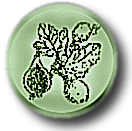Subsystem: Mycobacterium virulence operon possibly involved in quinolinate biosynthesis
This subsystem's description is:
Virulence operon possibly involved in quinolinate biosynthesis
For more information, please check out the description and the additional notes tabs, below
| Diagram | Functional Roles | Subsystem Spreadsheet | Description | Additional Notes | |||||||||
Oops! We thought there was a diagram here, but we can't find it. Sorry
Virulence operon possibly involved in quinolinate biosynthesis Corresponding Rv# with Functional Role Rv1594 = Quinolinate synthetase (EC 2.5.1.72) Rv1595 = L-aspartate oxidase (EC 1.4.3.16) Rv1596 = Quinolinate phosphoribosyltransferase [decarboxylating] (EC 2.4.2.19) ================ Note the following discussion relating to Shigella nadA and nadB of Shigella flexneri 5a are antivirulence loci responsible for the synthesis of quinolinate, a small molecule inhibitor of Shigella pathogenicity. Prunier AL, Schuch R, Fernández RE, Mumy KL, Kohler H, McCormick BA, Maurelli AT. Source Abstract The evolution of bacterial pathogens from commensal organisms involves virulence gene acquisition followed by pathoadaptation to the new host, including inactivation of antivirulence loci (AVL). AVL are core ancestral genes whose expression is incompatible with the pathogenic lifestyle. Previous studies identified cadA (encoding lysine decarboxylase) as an AVL of Shigella spp. In this study, AVL of Shigella were identified by examining a phenotypic difference from its non-pathogenic ancestor, Escherichia coli. Unlike most E. coli strains, Shigella spp. are nicotinic acid auxotrophs, the pathway for the de novo synthesis of NAD being uniformly defective. In Shigella flexneri, this defect is due to alterations in the nadA and/or nadB genes encoding the enzyme complex that converts L-aspartate to quinolinate, a precursor to NAD synthesis. Quinolinate was found to inhibit invasion and cell-to-cell spread of Sh. flexneri 5a and its ability to induce polymorphonuclear neutrophil transepithelial migration. Virulence of other Shigella species was also inhibited by quinolinate. Introduction of functional nadA and nadB genes from E. coli K-12 into Sh. flexneri 5a restored its ability to synthesize quinolinate but also resulted in strong attenuation of virulence in this strain. The results define nadA and nadB as AVL in Shigella and validate the concept of pathoadaptive evolution of bacteria from commensal ancestors by inactivation of AVL. They also suggest that studies focusing on this form of bacterial evolution can identify novel inhibitors of virulence in other bacterial pathogens. ============= | |||||||||||||




